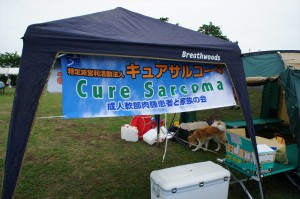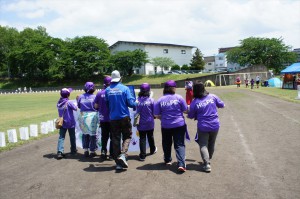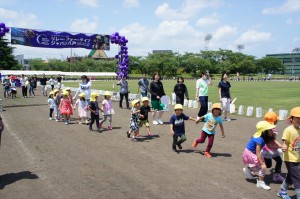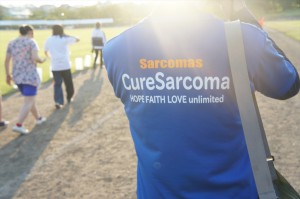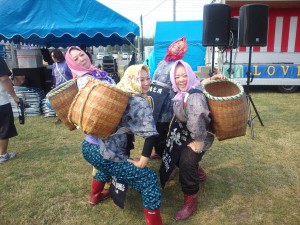I obtained a scholarship of PAL (Patient Advocacy Leadership) program from Japan Society of Clinical Oncology and attended the 2015 ASCO conference held in Chicago from May 29 to June 2.
Four members (two from last year and two new members including me) were chosen to attend this ASCO. I got rather nervous because there was no explanation in advance on who to attend and how to make a registration. I made the airline and hotel reservation and ASCO web registration by myself. Two members from last year were supposed to look after the new members, but they had to return to Japan after attending only the opening day in order to take part in the Cancer Summit sponsored by Ministry of Health, Labour, and Welfare on June 1. However, we could manage to survive by ourselves and participated in sessions, browsed poster exhibitions, and visited many booths of pharmaceutical companies. Five days passed by very quickly.
I took off from Haneda and arrived in Chicago after visiting my wife’s grave in Vancouver. It was my second visit to Chicago since I last visited there 25 years ago. Chicago is a very attractive city facing Lake Michigan with old and new buildings in the same area. We can enjoy art galleries and museums in the day time and blues and jazz in the evening.
ASCO is the world largest conference on cancer medical treatment with 38,000 attendance including doctors, researchers, employees from pharmaceutical companies, and so on. Unfortunately there were no participants from US sarcoma patient groups in the PAL program. However, one group called Sarcoma Alliance had a booth exhibition. (There was only one desk with no people, but I could meet one person on the last day.) I would like to start contacting them from now on. PAL lounge was very comfortable with many sofas. Even breakfast and light lunch were prepared in addition to drinks and snacks. I had purchased lunch tickets in advance via online, but those were not necessary at all.
In the morning of the first day, I attended the meeting of SARC(Sarcoma Alliance for Research through Collaboration)held in a midtown hotel. I met Dr. Robert Maki and Dr. Robin Jones I had met in Japan before. At this year’s ASCO, there was a presentation on immunotherapy at a symposium in a big conference hall. Immunotherapy has not received much positive attention because it was considered to be suspicious. As for sarcoma, the sarcoma education session had only a few attendees, but poster sessions and oral presentation sessions on clinical trial results were heated up. Poster sessions in the morning on May 31 had 70 posters on sarcoma. Dr. Nishida and Dr. Narahara put their posters there. In addition, June 1 evening oral presentation session on sarcoma was full with an audience of 300, and the two rooms were hurriedly added for a simultaneous broadcasting. I understood why it is said that the use of anticancer drug including molecular target drug is decided at ASCO.
At medical conferences in Japan, patients cannot visit pharmaceutical company booths due to the Pharmaceutical Affairs Law restrictions. However, anyone could visit them and ask questions at ASCO.
Two main purposes of my visit this time were to obtain useful information on sarcoma clinical trials and to communicate with US sarcoma patients. Unfortunately I did not have many chances to talk with sarcoma patients.
The below are the brief summary reports of oral sarcoma presentation sessions on June 1.
1) Gemcitabine + Docetaxel phase III clinical trial As a result of comparison with doxorubicin, there was no special superiority in the initial treatment of progressive soft tissue sarcoma on the 24 week no progression rate. Doxorubicin had a better result on heartbeat rates. Among male patients, doxorubicin had some better results.
2) Olaratumub (IMC-3G3、PDGFRα antibody, Eli Lilly) The test was done in the phase b/II clinical trial of doxorubicin alone and using it together with olaratumab toward 130 progressive soft tissue sarcoma patients. It was reported that the duration of life had been extended by 10.3 months using olaratumab with doxorubicin. It is planned to move on to a phase III clinical trial.
3) Eribulin (309 trial, Halaven, Eizai Co., Ltd.) Eribulin had a good performance in the phase III clinical trial against breast cancer patients. This time, a phase III trial to compare eribulin with dacarbazine (Kyowa Kirin) was conducted against 594 progressive leiomyosarcoma and liposarcoma (ADI) patients. It was reported that eribulin had better OS of 13.5 months, compared with dacarbazine’s 11.5 months. As a result of this data, Eisai plans to extend this drug’s application process in Japan, US and Europe in the early half of 2015. This is going to be the second application after breast cancer.
4) Trabectedin phase III clinical trial (Taiho Pharma) The phase III clinical trial to compare trabectedin with dacarbazine was conducted against progressive liposarcoma and leiomyosarcoma patients. Trabectedin had some improving effect on PFS and DDC. (PFS: 4.2 months v.s. 1.5 months.)
5) Regorafenib phase II clinical trial (Bayer) Double blind test (ad hoc patient selection and use of placebo drug) was conducted against leiomyosarcoma and other soft tissue sarcoma patients. As a result, there were improvements in PFS (3.7 months v.s. 1.0 month) and OS (in the case of leiomyosarcoma). Toxicity was predictable and acceptable. Final analysis is to be completed by the end of 2015.
6) Notes of new treatments to sarcoma patients
・Cost comparison: eribulin v.s. dacarbazine. $5,511 v.s. $78. Eribulin is very expensive and is hard to evaluate.
・PFS comparison: trabectedin v.s. dacarbazine. Is 3 months improvement significant enough?
・Regorafenib: It seems too early to make an evaluation.
This is a quick report of my ASCO visit. Thank you very much.
Hiroyuki Onishi Chairperson
NPO Cure Sarcoma


